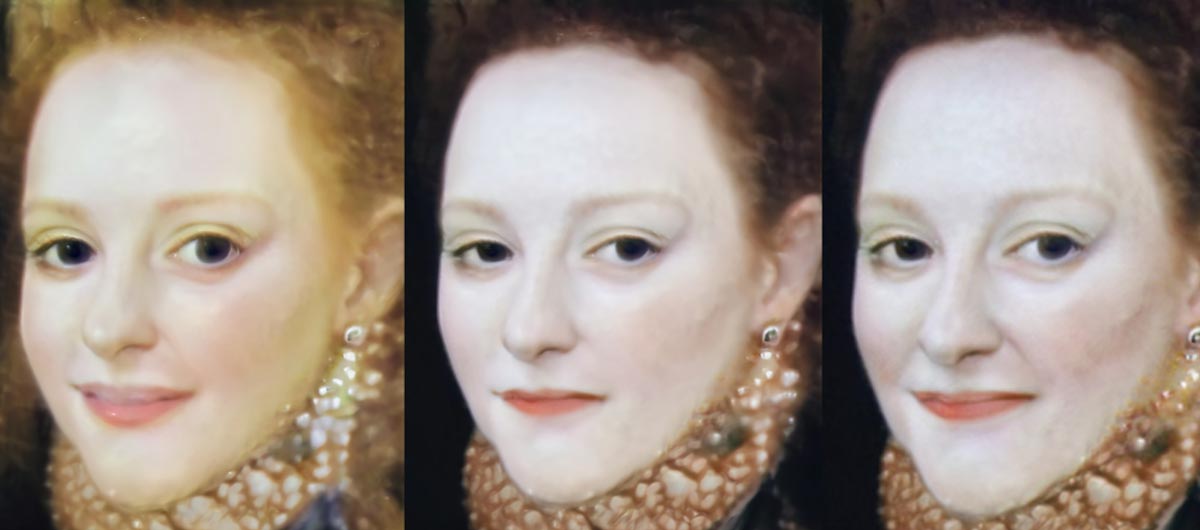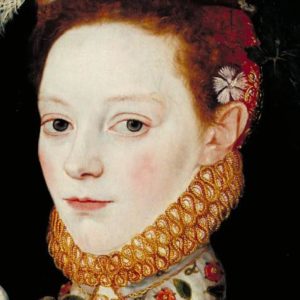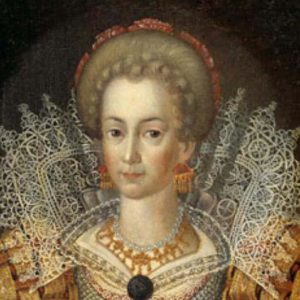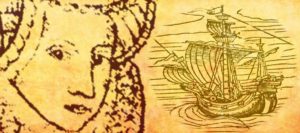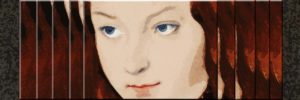On the road to developing characters for my historical novel, I’ve been playing with art in a web-based software called Artbreeder.
Portraying the present, describing the past
Nowadays, with a camera in every mobile phone and a phone in increasing numbers of hands around the world, portraits and group photos are ubiquitous. Whether we take them ourselves or get others to hold the phone to capture the image, the memory is fading of days gone by when photos were more unusual and relatively costly. (The memory of those days when a photo was rare and expensive is already all but lost.)
Writing historical fiction one is faced with an interesting problem. Readers want to know how your characters looked, and so do you, but what have you got to go on? By and large, if you are dealing with historical personalities, the further back in time you venture, the less likely you are to find pictures of your characters. But you are also going to find descriptions of them few and far between.
My historical novel revolves around Elin Ulsdotter (Bååt) – known to history as Helena Snakenborg, Marchioness Northampton. There are exactly two written descriptions of her from the period I’m writing about. In one she is described (along with the other maids of honour around Princess Cecilia Vasa) as “fair”. In the other, a witness to her wedding calls her a “beautiful German girl”. But in context “fair” probably doesn’t mean blonde (though we can guess it might do), and “beautiful” isn’t helpful. (“German” is just plain wrong.)
Uncertain provenance
Elin’s Story is set in the third quarter of the 16th century, partly in Elizabethan England. A well-quarried period which you’d expect to have quite a lot of visual information. In one sense you’d be right – this is slap in the middle of the Renaissance. Artists like the elder Pieter Bruegel in the Netherlands, Michelangelo Buonarroti in Italy, or the Fleming miniaturist Levina Teerlinc are all active. On the other hand very few paintings exist that are unquestionably representations of specific people from the period. There are more pictures that are believed to represent certain individuals, but even these are not so very common.
To take Elin herself as an example. This picture in London’s Tate Gallery is called “A Young Lady Aged 21”. It’s subtitled “Possibly Helena Snakenborg, later Marchioness of Northampton”. Possibly. The identification was made (in 1980) by Swedish literary historian Gunnar Sjögren. Also the author of the most recent biography of Elin, published in 1973. Not to imply he may have been biased, not at all!
Meanwhile here is Princess Cecilia Gustavsdotter (Vasa). This portrait has been considered to represent the princess, says the Swedish Wikipedia carefully. (Porträttet har ansetts föreställa prinsessan.) The picture is a copy made in the 1600s, says the Swedish Dictionary of National Biography (Svenskt biografiskt lexikon).
Featureless
Trying to find images that represent my characters, I’ve made a small collection of period portraits. Paintings and drawings of Renaissance people, especially northern Europeans. For my purposes it doesn’t really matter if a painting is a real representation of Princess Cecilia, say, or of Elin herself, but these paintings are a good starting point for me. Most of my characters, both the real historical personalities as well as the invented ones, are otherwise featureless.
Until now, my practice has been to find a picture that chimed a little with my idea of the way a character looked and use that. In this way princesses have been recast as chambermaids and tailors have become dukes. But I’m always conscious of the original picture and sometimes that gets in the way of my imagination.
That was before I found Artbreeder.
Artbreeder
Artbreeder is a website that lets you change and combine images using a form of – hmmm – machine learning. I hesitate to say Artificial Intelligence, because I don’t think intelligence is involved, but other people on line are calling it AI. It seems like the Artbreeder software calls on a huge database of on-line images. Portraits in this case – including selfies I guess (taking us back to to my earlier comments). When you use the software to change an image you have uploaded, or one you’ve found on the Artbreeder site itself, it makes use of this database to change the picture. The changes can be extreme or quite subtle.
Starting from my collection of Renaissance faces, I’ve been playing around in Artbreeder to create portraits that are closer to what I imagine my characters look like. I find it takes the picture further away from the original and frees up my imagination.
Artbreeder has a number of different options including Landscapes, Animé and Album Art (for record covers). I’ve only been using the portrait option though, so that’s what I am going to talk about here.
Exciting portraits
There are four things you can do with a portrait. First, you can tell Artbreeder to create “children” of your original picture. Doing this will produce six variations on your picture. You can adjust these to be closer to the original or more dissimilar. Here are my favourite “children” from the Young Lady and Princess Cecilia pictures.
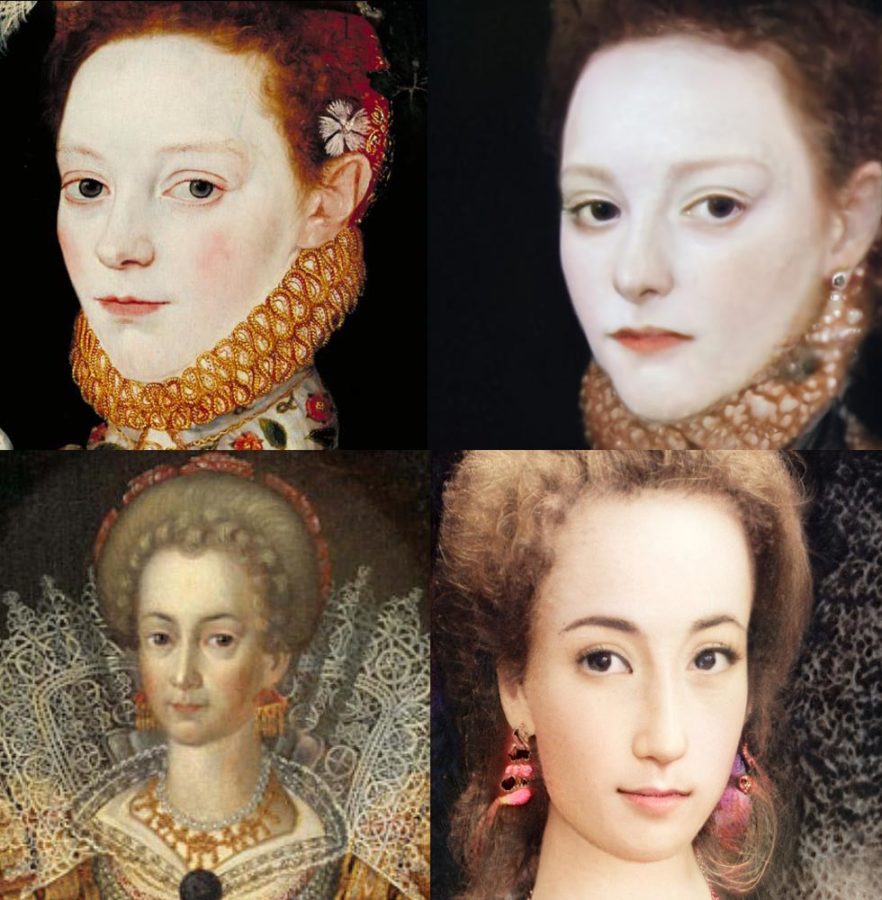
The second thing you can do is “crossbreed”, i.e. mix your original picture with a second. I’ve been doing this especially with those of my characters where I have a couple of alternate pictures. Here, for example, is the face of one of the Princess’s maids, Johanna Jarlsdotter (Vassi). I made it by mixing two portraits by Lucas Cranach that I’ve been trying to decide between for years.
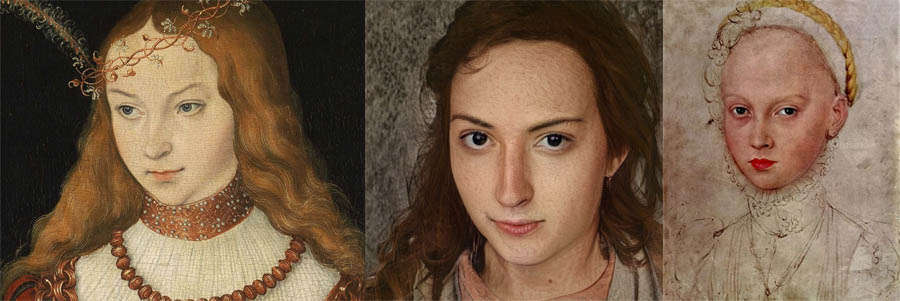
Gene-edit
Once I’ve made (and saved) my basic image, the next step is to tweak it in the third portrait mode. This is the “edit-genes” section. The range of parameters that you can use to alter your image is quite wide. You can change the tonal colour, hue and saturation of the picture, you can tilt the head back, forward or from side to side, you can age the portrait and intensify or change its gender. You can give the subject features that whoever programmed Artbreeder associates with Asian, African, Latin American and European faces.
When you first start playing on Artbreeder you will probably do as I did and pull the slider under one or more of the parameters all the way to one side or the other, just to see the effect. In this way I created an “African” version of Elin by sliding the “Black” slider all the way to the right. Sliding the slider all the way to the right on the “Gender” parameter, I managed to create an image of Elin’s father. Interestingly, the male end of the gender parameter gives an older man, while the extreme female end gives you something that looks awfully like an animé caricature or an elf.
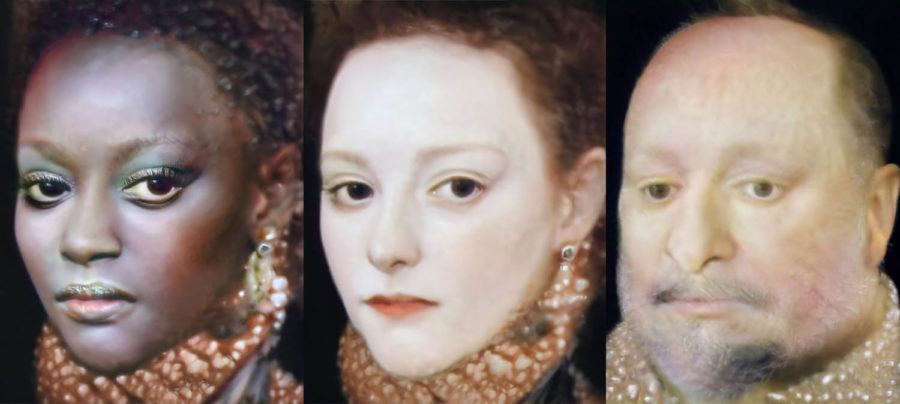
Small adjustments
After I’d done all of that, I found myself calming down and using just a few parameters, making small adjustments. Over the course of the four projected novels and about 12 years of Elin’s Story, my heroine ages from 14 to 26. The original portrait is supposed to show her at 21. Here’s what I was able to achieve for her, using Artbreeder, at the two ends of the story.
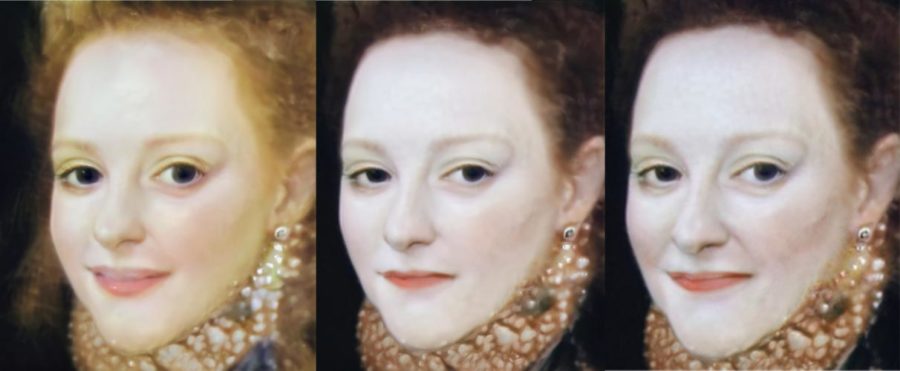
There are also options to have the character open or close their eyes and mouth, and look happier or angrier. Playing around with these parameters I notice that it’s not just the eyes or mouth or facial expressions that change. The pictures can brighten or become less sharp as eyes close. The portraits can lose or put on weight (become angular or rounder) as mouths open or close. I’ve tried to change back those things using the tonal sliders. But really it’s astounding how good the pictures are despite these issues.
Animations
The fourth thing you can do with your Artbreeder portraits is animate them. With a small range of portraits of the one character, with eyes open and closed, mouth smiling or not, it’s possible to link them in a sequence and get Artbreeder to create a little film out of them. This takes a bit of time, and you have to wait for an e-mail telling you that the video has been prepared, but when you receive it and download it, you have a picture of your character moving, blinking, smiling and opening their mouth to speak. It’s a bit like one of the portraits in the pages of Harry Potter’s Wizarding World newspaper.
The animations are saved in the MPEG4 format, which is high quality and perfect for using on social media, but not so good for putting into a web page. I’m working on converting one of my animations into a GIFF so I can share it here. It’s not ready yet.
I’ve had a lot of fun playing with Artbreeder. The changes it makes to the portraits gives me so much to read into my characters’ faces, into their personalities. It opens up the doors of my imagination.

